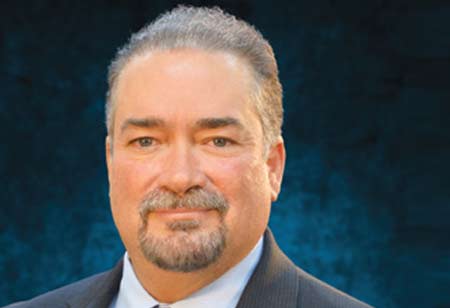

Thank you for Subscribing to Gov Business Review Weekly Brief

Mark Buonauro, is an accomplished and strategic information services and technology executive with a history of success in healthcare, and large multinational organizations. With a successful background in executive stakeholder management, IT budgets, leadership development, system implementations and upgrades, business process improvement, cyber-security, compliance assessments, and data risk management; Mr. Buonauro is on a quest to deliver cutting-edge solutions with his business partners. Currently, Mr. Buonauro serves as Chief Information Technology Officer at Kern County
Can you share with our readers your current roles and responsibilities in the organization? Being in the public sector for the first time has been a unique learning experience for me. In the first six months, my primary focus has been on relationship-building and understanding needs and how the organization works. My priority is to transform the culture of IT away from a focus on reacting to break/fix issues to becoming a strategic business partner for all County entities. To support this priority, I have established goals focused on accountability, communications, and an increased security posture. As a Chief Information Technology Officer, how important do you think it is to develop leaders in your organization? In my opinion, many IT professionals have traditionally overlooked the importance of developing soft skills and leadership qualities. For nearly a year at Kern County, my focus has been to place and develop the right people in leadership positions. It is vital to have technically competent people in leadership positions who are also capable and willing to coach and mentor our individual contributors. It is also important to let people take some risks and learn from their mistakes. Good leaders know when to observe and when it is time to step in and course correct. Can you share the challenges you have noticed in deploying IT technologies in the public sector? From my personal experience, it is quite challenging to make technological changes within the public sector. Due to the high level of customization of existing, long-standing legacy systems, it is difficult to find new applications that meet every department’s needs. For me, the greatest challenge is building consensus across all executive stakeholders. There must be trust in the process and in leadership that functional gaps will be addressed in subsequent phases of any implementation. “Implementing new technology (that meets everyone’s needs) is exceedingly challenging in an environment that supports 40 different County departments and it requires a significant amount of time to build consensus and align on scope and functionality” Can you give a piece of advice to your fellow peers? I think one of the greatest pieces of advice I could give is to get out of the office and interact with business partners. It is important to not only understand their current needs but also in anticipating future needs and changes within the organization, community, and constituencies. Having a better understanding of trends and developments within the community helps us get out in front of problems. Building relationships with fellow leadership professionals is also essential in building consensus and trust. With these relationships, it may be possible to implement a system that meets 80 percent of the organization’s needs, with the understanding that the remaining 15-20 percent can be addressed in the following months/years. How do you envision the future of the public sector with the implementation of new technologies? Our organization, like many government entities, is a little behind in terms of technology, making it a bit difficult to talk about future technologies. We are currently working on transitioning from legacy on-premise applications to a cloud-based system to catch up to current standards. One of the main things I like to focus on is using AI, specifically in cybersecurity. It is imperative to have tools to study lateral movement throughout the environment and understand out of the ordinary traffic patterns that might represent a risk.I agree We use cookies on this website to enhance your user experience. By clicking any link on this page you are giving your consent for us to set cookies. More info